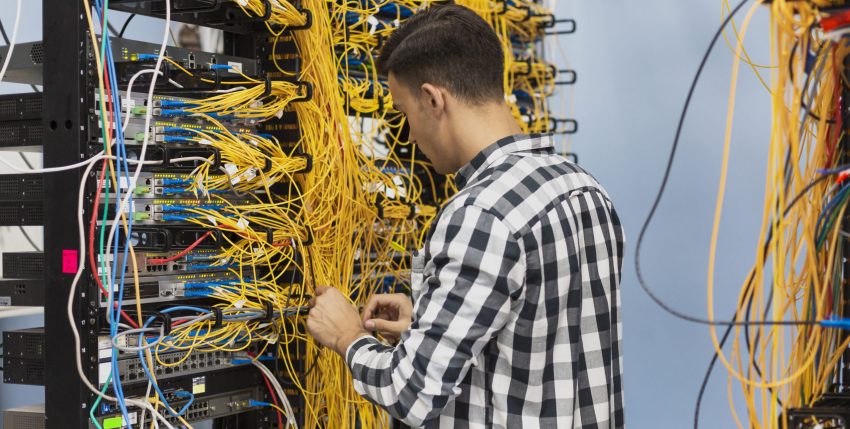LAN Basics
- LAN = Local Area Network (small area)
- Switches do not separate LANs
- Routers separate LANs (1 router interface = 1 LAN)
Data Encapsulation: PDUs
- Data → Segment → Packet → Frame
- Ethernet Frame = encapsulated Packet
Ethernet Frame Structure
[ Preamble (7) | SFD (1) | Destination MAC (6) | Source MAC (6) | Type/Length (2) | Data | FCS (4) ]
- Frame Total: 64 to 1518 bytes (excluding jumbo frames)
- Min payload: 46 bytes → if smaller, switch adds padding
Ethernet Header (14 bytes)
- Destination MAC (6 bytes)
- Source MAC (6 bytes)
- Type/Length (2 bytes)
→ depends on Ethernet version:≤1500: length (802.3)≥1536: type (Ethernet II, e.g. 0x0800 for IPv4, 0x86DD for IPv6)
Preamble + SFD (not technically part of header)
- Preamble:
10101010× 7 (7 bytes) — for clock sync - SFD:
10101011(1 byte) — marks frame start
Ethernet Trailer (4 bytes)
- FCS (Frame Check Sequence):
- Uses CRC to detect errors
- Receiver discards frame if CRC check fails
MAC Address (6 bytes)
- Globally unique (burned-in at manufacturing)
- Format:
AAAA.AA00.0001- First 3 bytes = OUI (manufacturer)
- Last 3 bytes = device-specific
Hexadecimal and Decimal Quick Recap
- HEX: 0–9 + A(10)–F(15)
0x1B= 1×16 + 11 = 27CDE= C×256 + D×16 + E = 3294
MAC Address Table (Switch)
- Built by learning Source MACs
- Used to forward or flood frames:
- Known Unicast: Forward
- Unknown Unicast: Flood
- Dynamic MACs: expire after 5 min of inactivity (Cisco default)
Show & Clear Commands
show mac address-table
clear mac address-table dynamic
clear mac address-table dynamic address 0f0f.0f0f.0f0f
clear mac address-table dynamic interface f0/0
ARP (Address Resolution Protocol)
- Resolves L3 IP → L2 MAC
- Request: Broadcast
FF:FF:FF:FF:FF:FF - Reply: Unicast
- Switch floods ARP Request if destination is unknown
- ARP Table: stored on PC
MAC Table: stored on switch
Show ARP
arp -a # Windows show arp # Cisco
ICMP (Ping)
- Layer 3 (Network), but uses MAC (L2) for delivery
- Echo Request → Echo Reply (Unicast)
- First ping may fail if ARP resolution not done
- Cisco:
pingshows 5 pings, each 100 bytes → output.!!!!
MAC vs ARP vs ICMP vs DHCP
| Table/Protocol | Device | Fields | Learning Method | Type | Notes |
|---|---|---|---|---|---|
| MAC Table | Switch | MAC–Port | Passive (from traffic) | Flood/Forward | Aged after 5 min |
| ARP Table | Host | IP–MAC | Active (via ARP) | Request/Reply | Separate from MAC table |
| ICMP | Host | Ping | Active | Unicast (needs ARP) | Echo Request/Reply |
| DHCP | Host | IP, GW, DNS | Active | DORA | Needs MAC to work |
Tools
📌 These are personal study notes. Please read the full disclaimer for more information.
Category: CCNA
